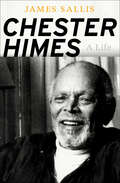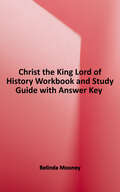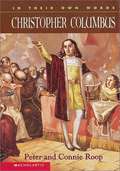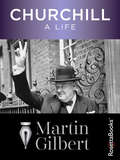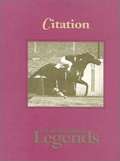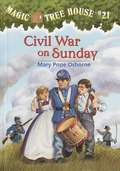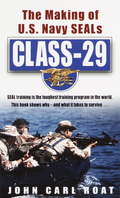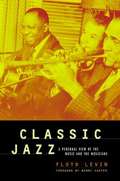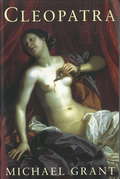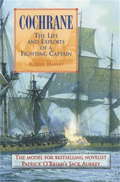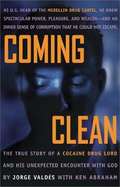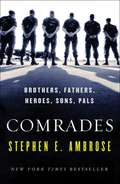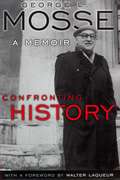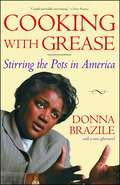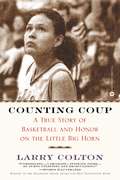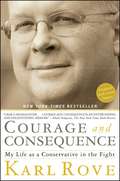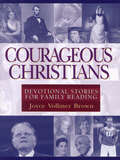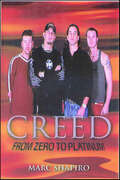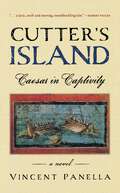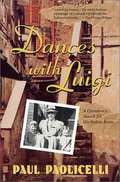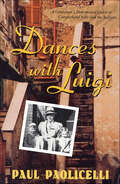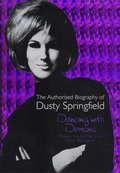- Table View
- List View
Che Guevara Talks to Young People
by Ernesto Che GuevaraEight speeches the legendary Cuban guerrilla fighter delivered between 1959 and 1964 to such groups as the First Latin American Youth Congress, International Volunteer Work brigades, and the Ministry of Industry seminar on Youth and the Revolution. Closing the collection is a 1997 tribute by Fidel Castro.
Chester Himes: A Life
by James Sallis&“[A] smart, conscientious, often stylish biography&” of the great African American crime writer of the mid-twentieth century (The New York Times). Best known for The Harlem Cycle, the series of crime stories featuring Coffin Ed Johnson and Grave Digger Jones, Chester Himes was a novelist and memoirist whose work was neglected and underappreciated in his native America during the 1950s and &’60s, even as he was awarded France&’s most prestigious crime fiction prize. In this major biography, literary critic and fellow writer James Sallis examines the life of this &“fascinating figure,&” combining interviews of those who knew Himes best—including his second wife—with insightful and poignant writing (Publishers Weekly). &“Himes wrote some of the 20th century&’s most memorable crime fiction and has been compared to Jim Thompson, Raymond Chandler, and Dashiell Hammett. His life was just as spectacular as his novels. Sentenced to 25 years in prison for armed robbery when he was 19, he turned to writing while behind bars and, when released after serving eight years, published two novels. Their poor reception by the white establishment only confirmed Himes&’s beliefs about racism in America. He eventually moved to Paris, spending most of the rest of his life abroad. While in Paris, he began to produce the crime fiction that would make him famous, including A Rage in Harlem and Cotton Comes to Harlem . . . [a] riveting biography.&” —Library Journal (starred review) &“Satisfying, thoughtful, long-overdue.&” —Publishers Weekly &“As intelligent, and as much fun to read, as a book by Himes himself. There is no higher praise.&” —The Times (London)
Christ The King, Lord of History
by Belinda MooneyOver 50 questions for each of the 30 chapters. Fill-in-the-blank, Multiple choice, True/False, Matching, plus a Mini-Essay Question. Answer Key perforated for easy removal. Students can write in the book, or pages can be cut out to use as tests. Fun and easy to use. Helps students (or adults) to learn the material found in the incredibly useful textbook, "Christ the King, Lord of History". For homeschooling, private study, Catholic or private schools, parochial schools, or anywhere a true history book is desired.
Christopher Columbus
by Peter Roop Connie RoopThe life story of Christopher Columbus is told using the journals he kept during his four voyages to the New World--voyages that would change world history forever.
Churchill: A Life
by Martin Gilbert&“A richly textured and deeply moving portrait of greatness&” (Los Angeles Times). In this masterful book, prize-winning historian and authorized Churchill biographer Martin Gilbert weaves together the research from his eight-volume biography of the elder statesman into one single volume, and includes new information unavailable at the time of the original work&’s publication. Spanning Churchill&’s youth, education, and early military career, his journalistic work, and the arc of his political leadership, Churchill: A Life details the great man&’s indelible contribution to Britain&’s foreign policy and internal social reform. With eyewitness accounts and interviews with Churchill&’s contemporaries, including friends, family members, and career adversaries, it provides a revealing picture of the personal life, character, ambition, and drive of one of the world&’s most remarkable leaders. &“A full and rounded examination of Churchill&’s life, both in its personal and political aspects . . . Gilbert describes the painful decade of Churchill&’s political exile (1929–1939) and shows how it strengthened him and prepared him for his role in the &‘hour of supreme crisis&’ as Britain&’s wartime leader. A lucid, comprehensive and authoritative life of the man considered by many to have been the outstanding public figure of the 20th century.&” —Publishers Weekly &“Mr. Gilbert&’s job was to bring alive before his readers a man of extraordinary genius and scarcely less extraordinary destiny. He has done so triumphantly.&” —The New York Times Book Review
Citation (Thoroughbred Legends #3)
by Pohla SmithThere were few stars in the 1940s to rival Citation and jockey Eddie Arcaro on the nation's sports pages. Citation, who was the 1948 Horse of the Year and the last Triple Crown winner for a twenty-five-year period, was the brightest star in the galaxy belonging to Calumet Farm. The famed breeding and racing operation dominated American racing during the 1940s like no other stable before or since. Citation exemplified that dominance. The dark bay colt could run and win at any distance, and by the end of his 3-year-old season had recorded 15 consecutive victories. Although a leg problem sidelined him as a 4-year-old, Citation returned the next season and continued to race at age 6. He became Thoroughbred racing's first millionaire and set the modern-day record of 16 straight victories. His trainer, H.A. (Jimmy) Jones, called him the best horse of the century. Citation was elected to the Racing Hall of Fame in 1959, and died at Calumet at age 25 in 1970. He was ranked No. 3 in The Blood-Horse magazine's list of the Top 100 Racehorses of 20th Century.
Class-29: The Making of U.S. Navy SEALs
by John Carl Roat"Throughout training I kept having the thought,WELL, ALL THEY CAN DO IS KILL ME.It seemed to help." SEALs are the world's toughest soldiers. Working in squads and platoons that make up SEAL teams, they are trained in everything from underwater demolition to high-altitude parachute drops. Now John Carl Roat, graduate of Class-29, one of the earliest SEAL training classes, has written the only book devoted to the training of that exclusive warrior force. With unflinching honesty, Roat describes the brutal six-month program that took young men well beyond the endurance limits even of gifted athletes and created warriors who could proudly take their places in the teams. It was a program so demanding that by the end of Hell Week, the third week of the course, the original class of one hundred and thirty-four physically fit young men had been sliced to sixty-two.After retelling his own class's experience, Roat visits today's SEAL program and reveals how the program has changed over the last thirty-five years to include more classroom training and better and more sophisticated equipment-- without at all lowering the physical demands. SEAL training is still the best, and the toughest, training in the world.
Classic Jazz: A Personal View of the Music and the Musicians
by Floyd LevinAn award-winning jazz writer has pulled together 50 years' worth of his articles, which appeared mostly in jazz magazines, to take readers into the world of jazz and its musicians. This personal view of a rich American music weaves in anecdotal material, primary research, and music analysis into every chapter. 51 photos. 10 line illustrations.
Cleopatra: Cleopatra (Phoenix Press Ser.)
by Michael GrantCleopatra, Queen of Egypt, was also a scholar, murderer, lover of Julius Caesar and Mark Antony and one of the most remarkable women in history.The distinguished historian and classicist Michael Grant confirms that her reputation as a temptress was well-founded. However, by unravelling the sources behind the tangle of myth, gossip and invention he shows that the popular image of a wayward woman opting for a life of sensuous luxury and neglecting her affairs of state is far from the truth.A brilliant linguist and the first of her Greek-speaking dynasty who learned Egyptian, she was reputed to be the author of treatises on agriculture, make-up and alchemy. Her love affairs were carefully calculated to further her plans to restore her empire to its former greatness and she was a ruthless foe to all who stood in her way.But dead on her golden couch in the palace at Alexandria her life seemed to have ended in failure; her dreams of empire shattered; her lover Mark Antony a suicide himself and she a prisoner of her conqueror Octavian.An unforgettable portrait of an extraordinary queen and her stormy life.
Cochrane: The Fighting Captain
by Robert HarveyThe adventures of the daring Thomas Cochrane, called 'the sea wolf' by Napoleon, are so extraordinary that his life reads like a page-turning work of fiction. In one sense it became so, for the novelist Patrick O'Brian by his own admission used Cochrane as the basis for Jack Aubrey, hero of his much-loved series of naval novels.Cochrane became a household name when in 1800 he took command of the tiny brig, the Speedy, and created mayhem in the Mediterranean earning himself and his crew a fortune in prize money. A wildly contradictory character, never less than heroic, and this lively new account of his life has sold over 7,000 copies in hardback.
Cochrane: The Fighting Captain
by Robert HarveyThe adventures of the daring Thomas Cochrane, called 'the sea wolf' by Napoleon, are so extraordinary that his life reads like a page-turning work of fiction. In one sense it became so, for the novelist Patrick O'Brian by his own admission used Cochrane as the basis for Jack Aubrey, hero of his much-loved series of naval novels.Cochrane became a household name when in 1800 he took command of the tiny brig, the Speedy, and created mayhem in the Mediterranean earning himself and his crew a fortune in prize money. A wildly contradictory character, never less than heroic, and this lively new account of his life has sold over 7,000 copies in hardback.
Coming Clean
by Jorge Valdés Ken AbrahamThis is the autobiography of a man who went to prison and found Christ. This changed his life.
Comrades: Brothers, Fathers, Heroes, Sons, Pals
by Stephen E. AmbroseComrades is a celebration of male friendships. Acclaimed historian Stephen Ambrose begins his examination with a glance inward -- he starts this book with his brothers, his first and forever friends, and the shared experiences that join them for a lifetime, overcoming distance and misunderstandings. He next writes of Dwight D. Eisenhower, who had a golden gift for friendship and who shared a perfect trust with his younger brother Milton in spite of their apparently unequal stations. With great emotion, Ambrose describes the relationships of the young soldiers of Easy Company who fought and died together from Normandy to Germany, and he recalls with admiration three unlikely friends who fought in different armies in that war. He recounts the friendships of Lewis and Clark and of Crazy Horse and He Dog, and he tells the story of the Custer brothers who died together at the Little Big Horn. Ambrose remembers and celebrates the friends he has made and kept throughout his life. Comrades concludes with the author's recollection of his own friendship with his father. "He was my first and always most important friend," Ambrose writes. "I didn't learn that until the end, when he taught me the most important thing, that the love of father-son-father-son is a continuum, just as love and friendship are expansive."
Confronting History
by George L. MosseJust two weeks before his death in January 1999, George L. Mosse, one of the great American historians, finished writing his memoir, a fascinating and fluent account of a remarkable life that spanned three continents and many of the major events of the twentieth century. "Confronting History" describes Mosse's opulent childhood in Weimar Berlin; his exile in Paris and England, including boarding school and study at Cambridge University; his second exile in the U. S. at Haverford, Harvard, Iowa, and Wisconsin; and his extended stays in London and Jerusalem. Mosse discusses being a Jew and his attachment to Israel and Zionism, and he addresses his gayness, his coming out, and his growing scholarly interest in issues of sexuality. This touching memoir--told with the clarity, passion, and verve that entranced thousands of Mosse's students--is guided in part by his belief that "what man is, only history tells" and, most of all, by the importance of finding one's self through the pursuit of truth and through an honest and unflinching analysis of one's place in the context of the times.
Cooking with Grease: Stirring the Pots in American Politics
by Donna BrazileCooking with Grease is a powerful, behind-the-scenes memoir of the life and times of a tenacious political organizer and the first African-American woman to head a major presidential campaign.Donna Brazile fought her first political fight at age nine -- campaigning (successfully) for a city council candidate who promised a playground in her neighborhood. The day after Martin Luther King Jr. was assassinated, she committed her heart and her future to political and social activism. By the 2000 presidential election, Brazile had become a major player in American political history -- and she remains one of the most outspoken and forceful political activists of our day.Donna grew up one of nine children in a working-poor family in New Orleans, a place where talking politics comes as naturally as stirring a pot of seafood gumbo -- and where the two often go hand in hand. Growing up, Donna learned how to cook from watching her mother, Jean, stir the pots in their family kitchen. She inherited her love of reading and politics from her grandmother Frances. Her brothers Teddy Man and Chet worked as foot soldiers in her early business schemes and voter registration efforts.Cooking with Grease follows Donna's rise to greater and greater political and personal accomplishments: lobbying for student financial aide, organizing demonstrations to make Martin Luther King Jr.'s birthday a national holiday and working on the Jesse Jackson, Dick Gephardt, Michael Dukakis and Bill Clinton presidential campaigns. But each new career success came with its own kind of heartache, especially in her greatest challenge: leading Al Gore's 2000 campaign, making her the first African American to lead a major presidential campaign.Cooking with Grease is an intimate account of Donna's thirty years in politics. Her stories of the leaders and activists who have helped shape America's future are both inspiring and memorable. Donna's witty style and innovative political strategies have garnered her the respect and admiration of colleagues and adversaries alike -- she is as comfortable trading quips with J. C. Watts as she is with her Democratic colleagues. Her story is as warm and nourishing as a bowl of Brazile family gumbo.
Counting Coup: A True Story of Basketball and Honor on the Little Big Horn
by Larry ColtonIn this extraordinary work of journalism, Larry Colton journeys into the world of Montana's Crow Indians and follows the struggles of a talented, moody, charismatic young woman named Sharon LaForge, a gifted basketball player and a descendant of one of George Armstrong Custer's Indian scouts. But "Counting Coup" is far more than just a sports story or a portrait of youth. It is a sobering exposé of a part of our society long since cut out of the American dream. Along the banks of the Little Big Horn, Indians and whites live in age-old conflict and young Indians grow up without role models or dreams. Here Sharon carries the hopes and frustrations of her people on her shoulders as she battles her opponents on and off the court. Colton delves into Sharon's life and shows us the realities of the reservation, the shattered families, the bitter tribal politics, and a people's struggle against a belief that all their children -- even the most intelligent and talented -- are destined for heartbreak. Against this backdrop stands Sharon, a fiery, undaunted competitor with the skill to dominate a high school game and earn a college scholarship.
Courage and Consequence
by Karl RoveFrom the moment he set foot on it, Karl Rove has rocked America's political stage. He ran the national College Republicans at twenty-two, and turned a Texas dominated by Democrats into a bastion for Republicans. He launched George W. Bush to national renown by unseating a popular Democratic governor, and then orchestrated a GOP White House win at a time when voters had little reason to throw out the incumbent party. For engineering victory after unlikely victory, Rove became known as "the Architect." Because of his success, Rove has been attacked his entire career, accused of everything from campaign chicanery to ideological divisiveness. In this frank memoir, Rove responds to critics, passionately articulates his political philosophy, and defends the choices he made on the campaign trail and in the White House. He addresses controversies head-on-- from his role in the contest between Bush and Senator John McCain in South Carolina to the charges that Bush misled the nation on Iraq. In the course of putting the record straight, Rove takes on Democratic leaders who acted cynically or deviously behind closed doors, and even Republicans who lacked backbone at crucial moments. Courage and Consequence is also the first intimate account from the highest level at the White House of one of the most headline-making presidencies of the modern age. Rove takes readers behind the scenes of the bitterly contested 2000 presidential contest, of tense moments aboard Air Force One on 9/11, of the decision to go to war in Afghanistan and Iraq, of the hard-won 2004 reelection fight, and even of his painful three years fending off an indictment by Special Prosecutor Patrick Fitzgerald. In the process, he spells out what it takes to win elections and how to govern successfully once a candidate has won. Rove is candid about his mistakes in the West Wing and in his campaigns, and talks frankly about the heartbreak of his early family years. But Courage and Consequence is ultimately about the joy of a life committed to the conservative cause, a life spent in political combat and service to country, no matter the costs.
Courageous Christians: Devotional Stories for Family Reading
by Joyce Vollmer BrownMost Christian parents dream of raising children who will love God with their whole being and seek to serve Christ with their very lives. However, sometimes parents feel they lack solid Christian role models for their children outside of their family. Our kids need Christian heroes. Courageous Christians, by Joyce Brown, is just the family reader we need to fill this gap! The vast array of men, women, and children profiled in this book give everyone someone with whom to identify. These personalities are from different parts of the world and different time periods. These are people who have moved mountains with their faith, had courage beyond belief, and have demonstrated selfless, sacrificial love. Courageous Christians is a book that can be used by families with children of all ages. Joyce Brown provides clear, simple, well-explained stories of various Christian heroes. With sixty daily readings, this book will provide a perfect format for family devotions. This delightful family reader will teach children and parents alike what truly makes a Christian hero.
Courageous Christians: Devotional Stories for Family Reading
by Joyce Vollmer BrownMost Christian parents dream of raising children who will love God with their whole being and seek to serve Christ with their very lives. However, sometimes parents feel they lack solid Christian role models for their children outside of their family. Our kids need Christian heroes. Courageous Christians, by Joyce Brown, is just the family reader we need to fill this gap! The vast array of men, women, and children profiled in this book give everyone someone with whom to identify. These personalities are from different parts of the world and different time periods. These are people who have moved mountains with their faith, had courage beyond belief, and have demonstrated selfless, sacrificial love. Courageous Christians is a book that can be used by families with children of all ages. Joyce Brown provides clear, simple, well-explained stories of various Christian heroes. With sixty daily readings, this book will provide a perfect format for family devotions. This delightful family reader will teach children and parents alike what truly makes a Christian hero.
Creed: From Zero to Platinum
by Marc ShapiroCreed's story is indeed an inspirational one. The group of rockers originating from Tallahassee, Florida, made an indelible impression with their debut album, My Own Prison, released on the independent Wind Up Records label. Creed dominated the rock charts and made history when all four singles from this freshman album captured the number one position. Their success is all the more genuine because it was done without the backing of huge corporate dollars or the hype of a glitzy media campaign. With the release of their sophomore album, Human Clay, the Florida foursome continue to gain respect from critics and fans alike who praise them for their passionate live performances and poignant heartfelt lyrics. Read all the exciting details of a band whose faith and belief in their musical dream pulled them through their bleakest hour and propelled them forward to the peak of the musical charts. An accomplishment Creed achieved their way - without apology.
Cutter's Island: Caesar in Captivity
by Vincent Panella&“This vivid short novel . . . of Caesar&’s youthful adventure. . . . Matches the film Gladiator in its vigorous, viscerally affecting depiction of ancient Rome.&” —Publishers Weekly Most of us are familiar with the Caesar of Shakespeare and Shaw. We know him primarily as the manipulative warlord and statesman. But what about the Caesar of Plutarch and Suetonius—historians who dealt with Caesar as a young man? Here, in this stunning novel, written with all the excitement and eloquence of an epic poem, we find Caesar at the age of twenty-five captured by pirates as he sails to the Island of Rhodes to study rhetoric with the renowned Apollonias Moon. &“An alternately rousing and touching adventure tale that offers an intriguing glimpse into the future dictator's psyche...[and] a panoramic view of Rome. . . . Stirring.&” —Booklist &“ . . . A lyric, swift and moving, swashbuckling tale&” —Robert Fagles, award-winning translator of The Iliad &“Cutter&’s Island is a perfect flawless gem, without a false note anywhere.&” —Steven Pressfield, author of Gates of Fire
Dances With Luigi: A Grandson's Search For His Italian Roots
by Paul E. Paolicelli Paul PaolicelliIn this spirited memoir, veteran TV journalist Paul Paolicelli does what many of us can only dream of--he picks up and moves to a foreign country in an attempt to trace his ancestral roots. With the help of Luigi, his guide and companion, he travels through Italy--Rome, Gamberale, Matera, Miglionico, Alessandria, even Mussolini's hometown of Predappio--and discovers the tragic legacy of the Second World War that is still affecting the Old Country. He visits ancient castles and village churches, samples superb Italian cuisine, haggles at the open air market at Porta Portese, enjoys and Alessandria siesta, and frequents "coffee bars", where beggars discuss politics with affluent Italian locals. He finds lost-lost cousins during the day and performs with an amateur jazz group during the night. Along the way, he discovers deeply moving stories about his family's past and learns answers to question that have plagued him since childhood. More that just a spiritual account of one man's ancestral search, Dances With Luigi is also a stunning portrait ofla bella Italia--both old and new--that is painted beautifully in all of its glamour, history, and contradiction.
Dances with Luigi: A Grandson's Determined Quest to Comprehend Italy and the Italians
by Paul PaolicelliIn this spirited memoir, veteran TV journalist Paul Paolicelli does what many of us can only dream of--he picks up and moves to a foreign country in an attempt to trace his ancestral roots. With the help of Luigi, his guide and companion, he travels through Italy--Rome, Gamberale, Matera, Miglionico, Alessandria, even Mussolini's hometown of Predappio--and discovers the tragic legacy of the Second World War that is still affecting the Old Country. He visits ancient castles and village churches, samples superb Italian cuisine, haggles at the open air market at Porta Portese, enjoys and Alessandria siesta, and frequents "coffee bars", where beggars discuss politics with affluent Italian locals. He finds lost-lost cousins during the day and performs with an amateur jazz group during the night. Along the way, he discovers deeply moving stories about his family's past and learns answers to question that have plagued him since childhood.More that just a spiritual account of one man's ancestral search, Dances With Luigi is also a stunning portrait of la bella Italia--both old and new--that is painted beautifully in all of its glamour, history, and contradiction.
Dancing with Demons
by Penny Valentine Vicki WickhamDusty Springfield made her name in the 60s with a string of top ten hits. Her unique singing style and distinctive bouffant blonde look made her famous throughout the world. Despite a period in the wilderness during the 70s and 80s, she was back at the top in the 90s until her death from cancer in March l999.Born an Irish Catholic in l939, her background set her almost schizophrenically at odds with herself as she realised her sexuality and moved further into the rock world. Both Penny Valentine and Vicki Wickham knew Dusty well, as friend and manager for much of her career. As well as charting her gay relationships, this book also looks candidly at the period of her greatest self-destruction while living in Los Angeles in the 80s. Covering every area of her career with honesty and affection, Dusty is brought vividly to life.

